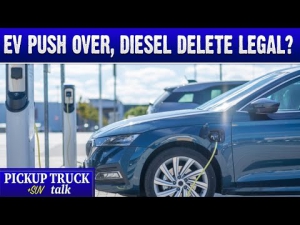Why Cybersecurity Experts Are Worried About Driverless Cars
If you pay attention to the automotive industry or the cybersecurity world, you already know there are some pretty serious cybersecurity concerns regarding driverless cars. What do cybersecurity experts think about autonomous vehicles, and what threats surround them? As the automotive technology industry grows, so does the threat of attack. Learn what you can do to keep yourself and your vehicle as safe as possible.
Are self-driving cars vulnerable to cyber attacks?
Driverless cars are certainly vulnerable to cyber attacks. Self-driving, or autonomous cars, rely on connectedness to work. Using artificial intelligence, self-driving vehicles are able to see the roads and make decisions about how to drive on them. There are six levels of autonomous vehicles, ranging from level 0 (no autonomy) to level 5 (fully autonomous). The higher the level of autonomy, the greater the risk of cyber attack.
When a vehicle is ‘connected,’ it means that it talks to other devices, networks, and vehicles. For example, Tesla’s use a neural network to operate their camera-based system. A neural network shares information with the entire Tesla network in order to ‘learn’ and become more efficient and effective.
Because there are so many ways for vehicles to be connected, there are plenty of opportunities for a hacker to exploit vulnerabilities. Hackers look for weaknesses or bugs in program software and systems to find a way in. Once they do that, they may be able to do a whole variety of things, from changing a car’s radio station to taking control of the steering wheel.
What are the cybersecurity concerns with driverless cars?
In addition to concerns about hacking autonomous vehicles, there are even simpler ways for someone to attack a vehicle running with artificial intelligence. A European Union Agency for Cybersecurity (ENISA) report states that “Adding paint on the road to misguide the navigation, or stickers on a stop sign to prevent its recognition are examples of such attacks. These alterations can lead to the AI system wrongly classifying objects, and subsequently to the autonomous vehicle behaving in a way that could be dangerous.”
How can you stop hackers from hacking autonomous cars?
ENISA’s report has some ways to keep driverless cars safer from attacks. One of these is to conduct regular security checks on the artificial intelligence in vehicles. They say “This systematic validation of AI models and data is essential to ensure that the vehicle always behaves correctly when faced with unexpected situations or malicious attacks.”
Automotive cybersecurity policies and regulations can also help prevent attacks on driverless cars. This needs to be taken seriously by the automotive industry to be effective. They need to make cybersecurity an essential part of the artificial intelligence design and implementation processes in order for it to be as safe as possible.
We are certainly going to be facing more automotive cybersecurity challenges in the future. As cars become more technologically advanced and reliant on artificial intelligence, they will become more connected. Hackers will have even more opportunities to exploit vulnerabilities in vehicles’ systems, as well as launch attacks that don’t depend on accessing a vehicle’s software. It is essential that the automotive industry take cybersecurity seriously, so that we may all be safer on the roads.
RELATED: Here’s Why You Should Keep Your Keys In The Freezer
The post Why Cybersecurity Experts Are Worried About Driverless Cars appeared first on MotorBiscuit.







